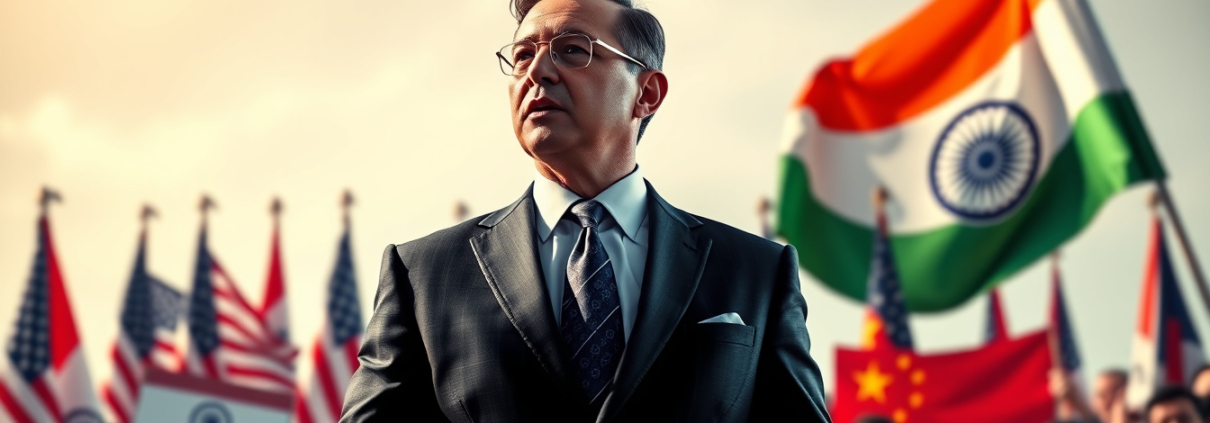Trump’s Bold Demand for Tariffs on India and China: A Controversial Move that Strains US-EU Relations
Trump’s Push for 100% EU Tariffs on India and China Sparks Controversy
September 11, 2025 — Former U.S. President Donald Trump pressed for the EU to set a 100% tariff on goods from India and China. He made his case to hit them for buying oil from Russia. His idea aims to punish these nations for aiding Russia’s energy plans. The plan divides opinion in Europe and beyond.
The Proposal and Its Context
Trump presented his plan during a meeting in Washington. Senior U.S. and EU officials talked face-to-face. Reporters from the Financial Times first noted the meeting, and CNBC later confirmed it through reliable sources. In his speech, Trump said the U.S. would copy any tariff the EU sets. The White House has not yet commented on the idea.
A European Commission spokesperson did not share details of the meeting. She explained that talks with global partners, including India and China, continue as they work on limits for Moscow. She mentioned the EU’s 19th sanction round against Russia. This round uses new methods to stop nations from dodging the rules. She said the U.S. remains a very important friend in stopping funds for Russia’s war.
European Caution and Trade Complications
European officials now watch Trump’s call with care. They worry because:
- The EU keeps its trade and political bonds with India and China close.
- Trade with Russia stays sensitive.
- The U.S. is finalizing a deal with New Delhi, making timing a sharp issue.
At the moment, the U.S. puts a 50% tariff on Indian goods. It also adds a 25% fee when India buys oil from Russia. Indian leaders call these charges "wrong, unfair, and heavy." They complain about mixed signals in U.S. and EU deals with Russia.
Ian Bremmer from Eurasia Group questions Trump’s plan. He sees a problem since the U.S. also wants better trade ties with India and China. He thinks the tariff push might pass the burden on to Europe while avoiding harm to U.S. ties with China. Bremmer warns that such a move could hurt unity across the Atlantic.
Why Europe Is Likely to Reject the Proposal
Most experts believe the EU will say “no” to Trump’s plan because:
- Europe sees tariffs as blunt tools that can hurt more than help.
- The EU still depends on many key imports from Russia, especially energy.
- EU trade with Russia remains high. Data shows €67.5 billion ($78.1 billion) in trade in 2024, with energy imports making up most of this.
Bill Blain, a market analyst at Wind Shift Capital, advises Europe to decline the plan. In his newsletter Morning Porridge, he warns that Europe should opt for discussions instead of entering a trade fight.
The Russia-Energy Connection
Europe buys much of its energy from Russia. This fact makes it hard to target nations like India and China. Russian pipeline gas once made up over 40% of EU imports in 2021 but dropped to about 11.6% in 2024. Still, Russia provides roughly 19% of the EU’s gas and LNG.
The U.S. now pushes Europe to buy more LNG from America. Trump pointed to a deal where the EU promised to buy LNG, oil, and nuclear energy worth $750 billion over three years. U.S. official Doug Burgum recently said that exporting LNG to Europe can cut Russian gas use and reduce money for its war.
Conclusion
Trump’s push for a 100% tariff on India and China may pull the world into a heavy trade dispute. His idea seeks to punish nations that help Russia but risks hurting important trade ties. Leaders in Europe and around the world see the plan as too risky. They choose talks over strong trade actions.
The events show the hard choices in global trade as leaders deal with sanctions, trade rules, and new world ties during the Ukraine conflict.
For continuous updates on this and other global economic affairs, stay tuned to CNBC.
Full money-growing playbook here:
youtube.com/@the_money_grower









